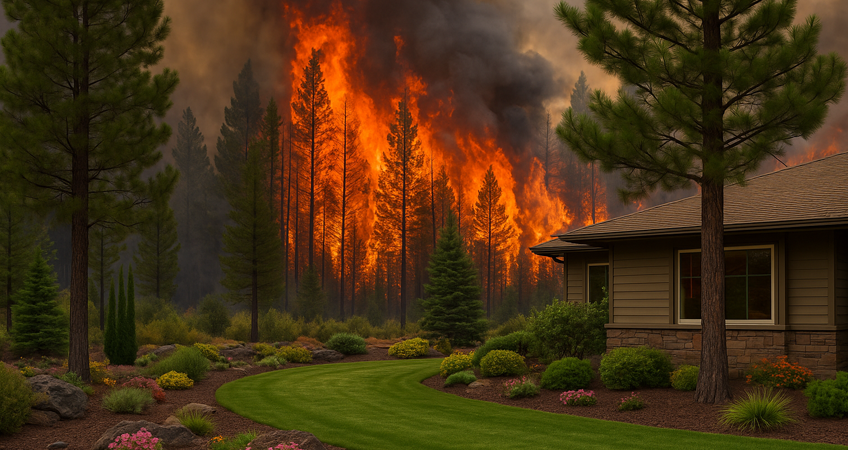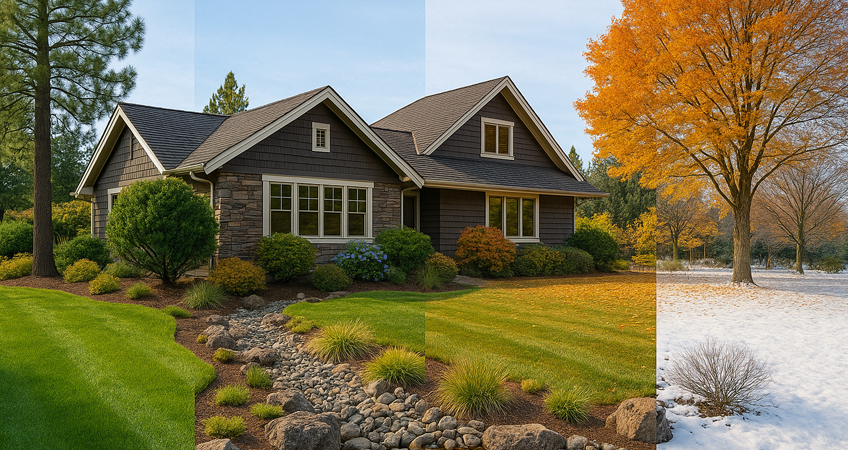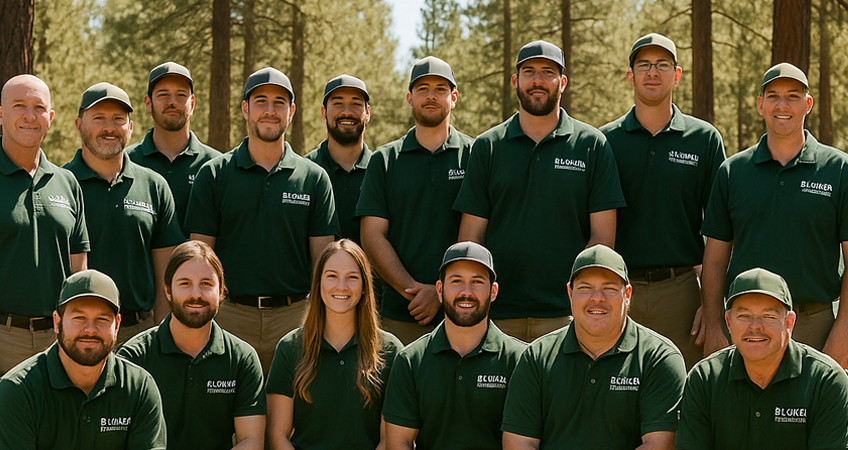
🔥 Fire-Safe Landscaping in Central Oregon: Protecting Your Property
Central Oregon’s high desert beauty is one of its greatest draws—but with that beauty comes responsibility. The region’s dry summers, frequent wind patterns, and dense stands of Ponderosa pines and juniper make it one of the most fire-prone areas in the Pacific Northwest. For homeowners, protecting property from wildfires is no longer optional—it’s essential.
At Klaver Landscaping, we believe that fire-safe landscaping doesn’t mean sacrificing curb appeal. With thoughtful planning, plant selection, and maintenance, you can create a landscape that’s both stunning and defensible. Whether you’re in Sunriver, Bend, or Caldera Springs, implementing fire-conscious landscape design offers critical peace of mind.
🧯 Understanding Defensible Space: A Layered Approach to Fire Safety
Creating defensible space is the cornerstone of fire-safe landscaping. This concept is based on three distinct zones around your home or structure, each playing a unique role in slowing or stopping the spread of wildfire.
Zone 1: Immediate Zone (0–5 Feet)
This is your home’s first line of defense, and it must be kept clear of anything flammable.
- Replace bark mulch with non-combustible options like crushed stone, gravel, or bare soil
- Keep the area clean of pine needles, leaf litter, firewood, or propane tanks
- Use paver walkways, stone patios, or hardscaped borders to create natural firebreaks
- Install irrigated planters or raised beds with low-growing, well-watered annuals or perennials
Zone 2: Intermediate Zone (5–30 Feet)
This zone is where landscaping begins to take shape but must be managed for spacing and maintenance.
- Keep lawns mowed to no more than 4 inches in height
- Prune tree branches at least 6 to 10 feet from the ground to prevent “ladder fuels”
- Group plants in islands with gravel or soil borders instead of continuous plant beds
- Choose clumping shrubs and space them with intention to limit horizontal spread
Zone 3: Extended Zone (30–100+ Feet)
Here, the goal is to reduce the density and flammability of native vegetation while maintaining the natural look.
- Thin trees to create at least 10 feet of spacing between canopies
- Remove dead trees, brush, and ladder fuels like young juniper saplings
- Maintain a healthy understory with fire-adapted groundcovers and minimal invasive weeds
Together, these zones slow fire, reduce embers, and give firefighters a chance to protect your home more effectively.
🌿 Choosing Fire-Resistant Plants That Thrive in Central Oregon
A key part of fire-wise design is plant selection. Not all vegetation is created equal when it comes to fire behavior. Plants with high moisture content, low resin, low oil content, and minimal litter are preferred.
✅
Recommended Fire-Resistant Plants for Central Oregon Landscapes:
Groundcovers
- Kinnikinnick – native, drought-tolerant, and hugs the ground
- Creeping Phlox – colorful and low profile, with minimal fuel
- Snow-in-Summer – silvery foliage reflects heat, resists fire spread
Shrubs
- Oregon Grape – evergreen and hardy with leathery leaves
- Red Osier Dogwood – fire-resistant and striking year-round
- Spirea – compact, moisture-retentive, and easy to shape
Trees
- Quaking Aspen – a favorite in fire-prone zones, low in resin
- Bigleaf Maple – broad canopy, great for shade, low flammability
- Western Larch – deciduous conifer that sheds its needles in fall
Avoid highly flammable species like juniper, arborvitae, and manzanita close to structures. While beautiful, they are full of oils and resins that ignite quickly and burn intensely.
🛠️ Maintenance: The Unsung Hero of Fire-Safe Landscaping
Even the best fire-wise design can fail without consistent maintenance. The hot, dry summers in Central Oregon can turn a neglected yard into a tinderbox.
Here’s how to maintain your landscape for peak fire resistance:
- Clean roofs and gutters regularly—they’re hotspots for embers
- Trim back trees and shrubs annually, especially those near structures or power lines
- Keep mulch layers thin (under 2 inches) and away from foundations
- Water deeply and consistently, especially during red flag warning periods
- Remove dead or diseased plants immediately—dry vegetation is instant fuel
- Inspect irrigation systems to ensure coverage and efficiency throughout summer
Many homeowners opt for a professional seasonal maintenance plan, and Klaver Landscaping is proud to offer these services to help keep your property both beautiful and protected.
🌲 The Klaver Landscaping Advantage
At Klaver Landscaping, we’re not just passionate about beautiful landscapes—we’re committed to building safe, sustainable, and regionally appropriate environments that thrive in Central Oregon’s climate.
Our fire-wise landscapes combine aesthetics with safety, using smart layout planning, drought-tolerant plantings, and non-combustible materials to reduce risk without compromising style. With decades of experience in local soil conditions, weather patterns, and vegetation, we offer more than a landscape—we offer peace of mind.
Contact us today to schedule a consultation and learn how we can help you design or retrofit your property with fire-safe landscaping solutions.

